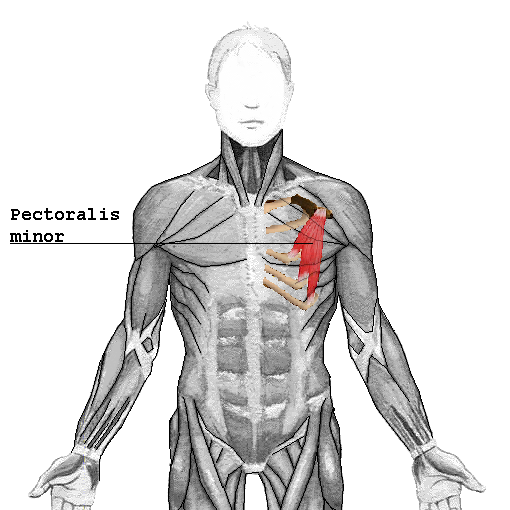
Continuing to break down the shoulder girdle...
We have the pectoralis major and minor muscles. Usually they're just referred to as your "pecs" and being that it's hard to isolate the two, that seems pretty reasonable. The pectoralis major is very large and fan-shaped, starting at the inner half of your clavicle, the sternum and the cartilage of the upper six ribs. It's pretty stable. It inserts into a groove on your humerus, so the major functions this muscle plays are in flexion (smaller angle) of your arm, bringing it in toward you, and rotating the arm toward you.
The pectoralis minor is much smaller and triangular-shaped. It sits just underneath the pectoralis major. It contracts in a different direction than the pec major, originating in the third, fourth, and fifth ribs and attaching to the coracoid process of your scapula. As the ribs do not move a lot, the pec minor serves to pull the point of the scapula downward and inward.
These muscles are extremely powerful!! They attach your arms to the front side of your body, so anything that you use your arms to move farther in front of you uses these muscles. Every time you pick up something. Muscles that get a lot of work also need to be stretched, or else they just get tight, painful and useless. Also, these muscles are in a very shortened position for most of the relaxed part of the day, particularly when you are on a computer. So now you REALLY need to stretch them.

There are a few ways you can go about this, and they're all pretty similar, but I suggest mixing it up to hit all the acute differences.
1) Stand in a doorframe and put your arms out at shoulder level. Hold on to the frame and lean forward.
2) Stand at a wall or lay facedown on the ground. Put one arm out either perpendicular to your body, or perpendicular with the elbow bent at a right angle. Then roll yourself away from the arm being stretched so your chest opens.
3) Stand and interlace your hands behind your back. Roll your shoulders back and reach your arms back as far as you can.
No comments:
Post a Comment